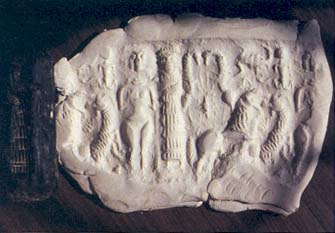Image Details

Courtesy Avner Raban
An Akkadian cylinder seal (far left), when rolled across a clump of wet clay, creates the scene. The seal dates to the early second millennium B.C.E. and originated in north Syria, but it was discovered in a fifth-century C.E. context at Caesarea. Author Raban urges that it be published, of course, but what should happen to it next? The seal proves only that even in earlier times people were saving antiquities—something we already knew. It has no relevance to the archaeology of Caesarea, and there is no lack of ancient seals; Raban suggests the seal would be a good candidate for sale.
